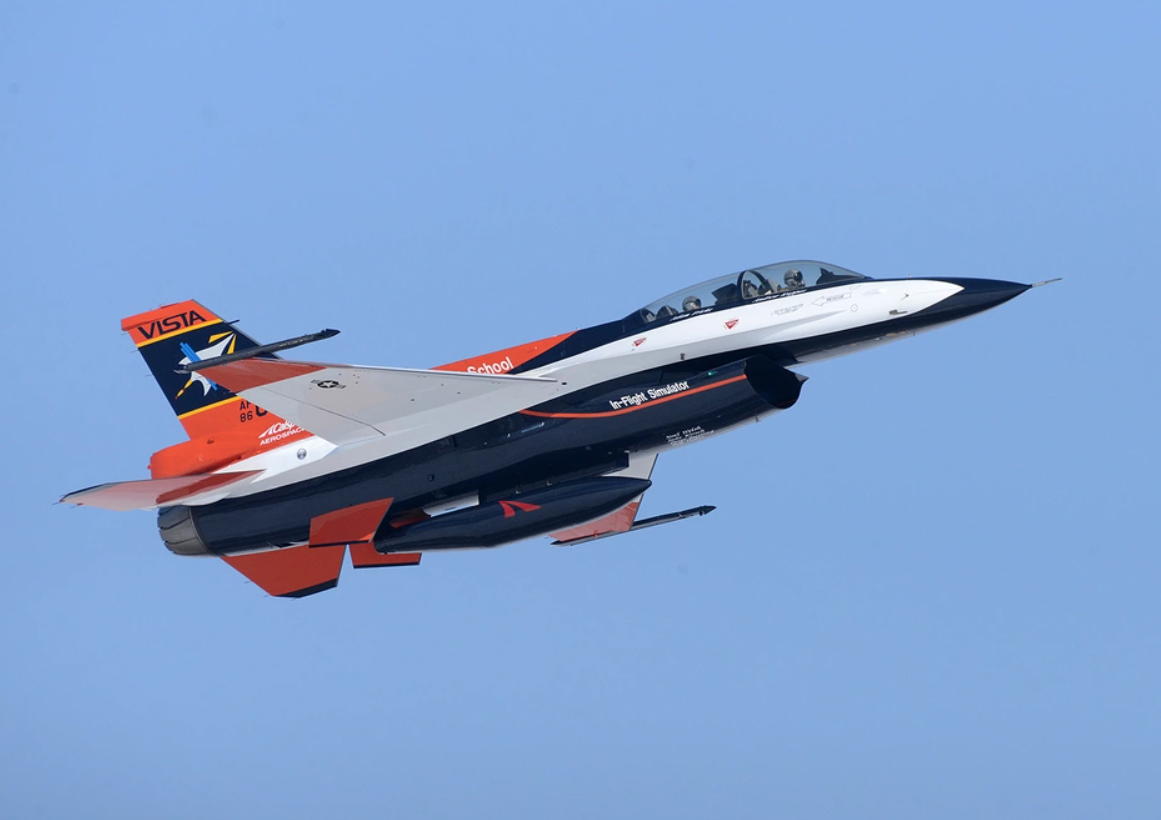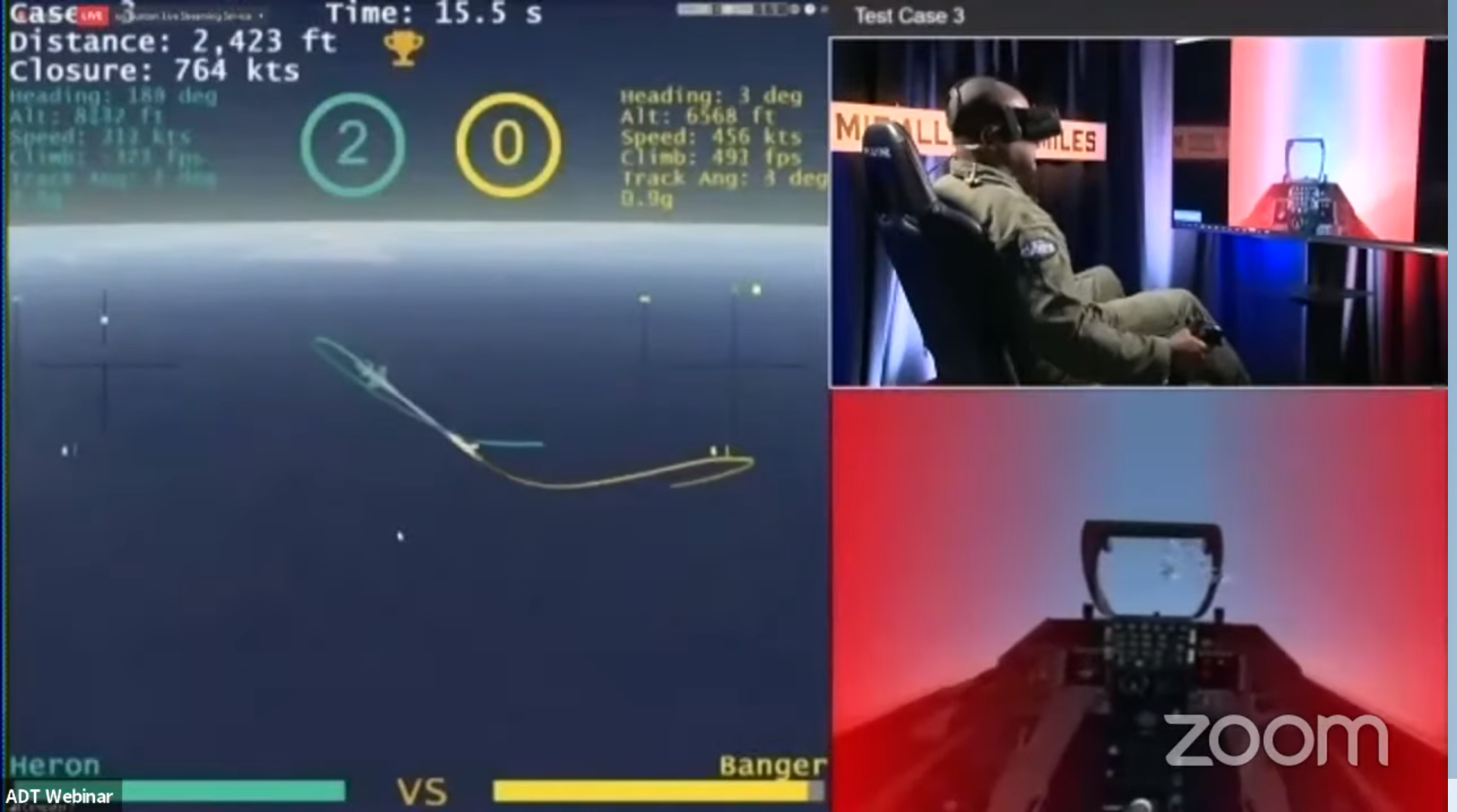The U.S. Defense Advanced Research Projects Agency (DARPA), the premier research and development arm of the U.S. military, recently flew an F-16 fighter jet for the first time using artificial intelligence (AI) technology.
For the past three years, DARPA has been developing artificial intelligence algorithms for pilot fighter aircraft through its Air Combat Evolution (ACE) program. The program has used the F-16 Fighting Falcon, a multirole daytime air superiority fighter jet, as its main test bed for developing these AI programs.
Thus far, AI programs have only ever flown simulated versions of the F-16. This week, however, DARPA announced the ACE program had progressed to flying an actual F-16 Fighting Falcon.
In December, ACE program algorithm developers installed their fighter pilot program into a specially modified F-16 test aircraft known as the X-62A or VISTA (Variable In-flight Simulator Test Aircraft). The ACE Program then fielded this AI-driven F-16 model at the Air Force Test Pilot School (TPS) at Edwards Air Force Base, California, in multiple flights over the course of several days.

“Thanks to the outstanding teamwork and coordination between DARPA, the Air Force Test Pilot School, the Air Force Research Laboratory, and our performer teams, we’ve made rapid progress in Phase 2 across all areas of the ACE program,” said Air Force Lt. Col. Ryan “Hal” Hefron, the DARPA program manager for ACE.
Hefron said the availability of the VISTA test aircraft allowed the program to skip over a planned AI tests of a subscale aircraft model and go straight to placing the flight program on a full-scale, functioning F-16. Hefron said that development saved the program at least a year of time.
AI-driven fighter jets could one day replace human pilots. The ACE program already demonstrated the competitive advantage AI has in simulated dogfights against human pilots.
In August of 2020, the program hosted the AlphaDogfight Trials, which saw AI programs compete against one another, with the winner moving forward to go head-to-head against an experienced human F-16 pilot in a flight simulator. In the final event, an AI program developed by Heron Systems beat the human pilot 5-0.

Though the AI program cleaned up in the simulated dogfights, it wasn’t facing some of the same real-world variables that can impact those outcomes.
“Let’s remember that this is a simulation, this is a game, the machines had perfect state information and in the real world, state information, or having perfect information is something that you never have,” a presenter for the simulated competition said at the time.
Hefron said the ACE team did observe some differences in how the AI program performed in simulated flights and the live aircraft tests.
“We didn’t run into any major issues but did encounter some differences compared to simulation-based results, which is to be expected when transitioning from virtual to live,” Hefron said. “This highlights the importance of not only flight testing advanced autonomous capabilities but doing so on testbeds like VISTA, which allowed us to rapidly learn lessons and iterate at a much faster rate than with other air vehicles.”
It’s not yet clear how the differences in simulated and real-life performance may impact the AI’s safety, flight and combat efficiency. Atlas News reached out to DARPA for more information on this matter but did not receive a response.
Hefron said the ACE program team conducted multiple sorties during the live tests and had the AI program perform numerous in-flight actions on each sortie. Hefron said they wanted “to test the algorithms under varying starting conditions, against various simulated adversaries, and with simulated weapons capabilities.”
AI programs could have several advantages over human pilots. An AI would eliminate physical constraints that effect a human, such as the impacts of high-G maneuvers on the human body.
AI could also save money on training costs. According to a 2019 RAND study, it costs about $5.6 million on average to train a pilot on the basic qualifications to fly an F-16.


